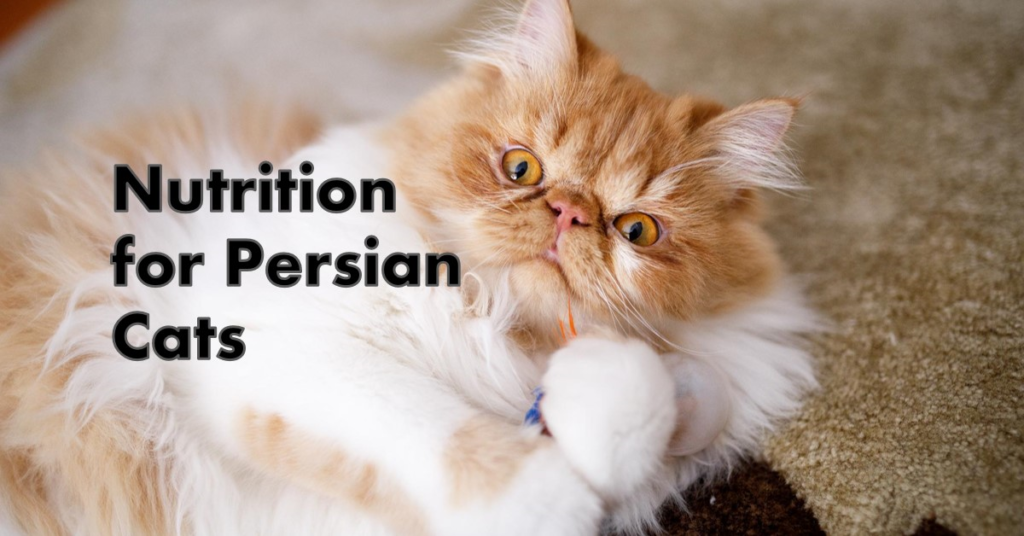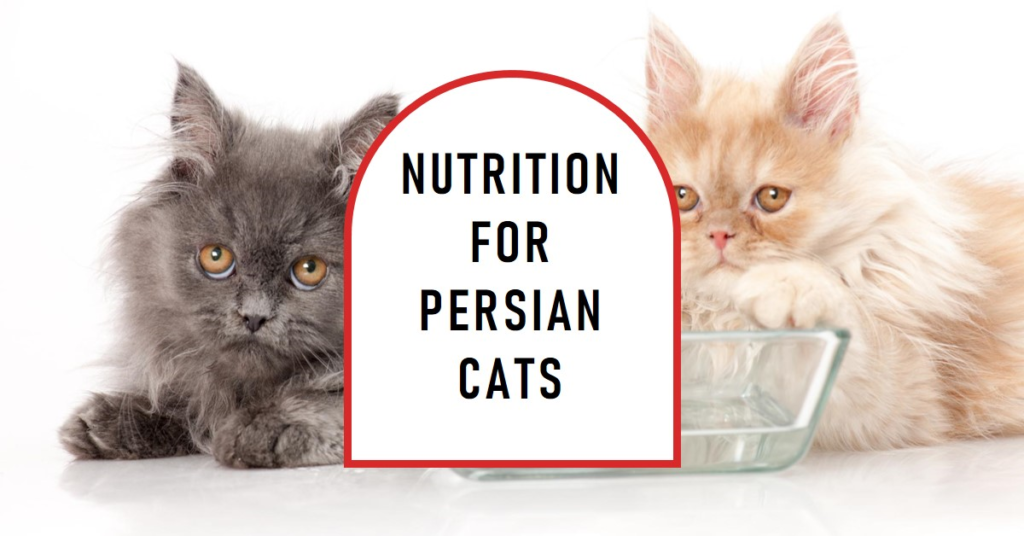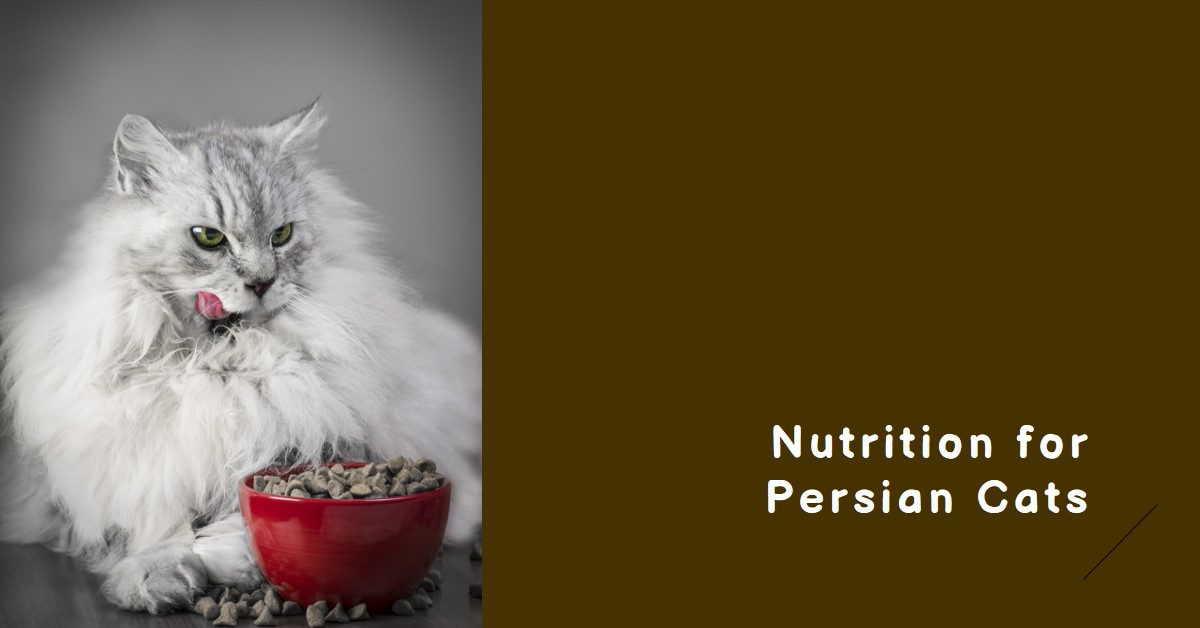Cats are beloved pets that provide companionship and joy to many people worldwide. Among different cat breeds, Persian cats are known for their beautiful long coats and sweet nature. As caring pet owners, we are responsible for providing Persian cats with a nutritious diet to keep them healthy and happy.
This article discusses the various nutritional needs of Persian cats and recommends the best cat foods for Persian cats to meet those needs. It covers essential topics like sources of calories, proteins, other nutrients, and ingredients to avoid. By choosing the right cat food for Persian cats, we can ensure our Persian furballs live long and healthy lives with us.
What should be the source of calories for Persian cats?

Persian cats need energy like humans to be active and play. Calories are essential for their energy needs. The best source of calories for Persian cats is protein and fat. Fat provides more than twice as many calories per gram as protein or carbohydrates. But too much fat can make cats overweight, which is also not good.
So, the best foods for Persian cats should have the right balance of calories, protein, and fat. Good sources are meat, fish, and eggs, which Persian cats love to eat. The calories in their food should come mainly from these natural sources instead of carbohydrates like wheat, corn, or rice, which cats don’t need much.
Why are proteins crucial in food for Persian cats?
Proteins are essential for Persian cats because they need them for healthy skin, coats, organs, and muscles. Protein helps cats stay strong and active. Cats cannot make their proteins and must get them from their diet.
The right amount of high-quality protein ensures Persians maintain a beautiful long coat. Good protein sources are meat, poultry, fish, and eggs. The proteins in cat food should come from natural beef as the first ingredients, not from plant or artificial sources. Meat-based protein is more accessible for cats to digest and use. Persian cats may lose fur or develop skin problems without enough natural protein.
How much protein do Persians need?
On average, an adult Persian cat needs about 30-50 grams of protein per 1000 calories in their diet. While growing, kittens need even more protein – approximately 50-70 grams per 1000 calories. The right amount of high-quality protein ensures healthy growth in kittens and a shiny coat for adult Persians.
Wet and canned cat foods for Persian cats usually contain more meat protein than dry kibble. Wet foods are especially good for Persian kittens or less active cats. For most adult Persians, dry cat food for Persian cats containing around 30% protein and 15% fat provides a balanced diet to meet their daily nutrient requirements. Both wet and dry foods with meat as the first ingredient provide ample protein.
What about other nutrients in a Persian cat’s diet?: Fat, Vitamins and minerals
Along with proteins and calories, fat, vitamins, and minerals are essential for Persian cats. Fat provides energy and helps cats absorb fat-soluble vitamins. However, too much fat can cause obesity. The food should list meat or poultry as the first 5 ingredients and contain about 15-25% of calories from fat.
Vitamins and minerals such as A, D, E, zinc, selenium, etc keep Persian cats healthy. A balanced cat food for Persian cats with meat as the first ingredient and no artificial additives ensures cats get adequate vitamins and minerals from their natural prey diet. Highly processed foods may lack some essential nutrients. So it’s best to choose either wet or dry food from trusted brands.
Cat food for Persians—ingredients to avoid!
While making food choices for our Persian cats, avoiding some ingredients unsuitable for their nutritional needs is essential. Ingredients like corn, wheat, soy, artificial colours, preservatives, and flavors should be avoided. Cats are carnivores and do not need grains in their diet. Corn and wheat provide unnecessary carbohydrates and very little nutrition.
Soy is difficult to digest. Artificial additives have no health benefits and may cause allergies in some cats. It’s better to choose foods with limited ingredients you can recognize, like meat, fish, or poultry. Highly processed foods are best avoided for Persians. Stick to brands that use quality meat or fish as the first ingredients.
The texture of Persian cat food
Persian cats, being bred for their silky long coat, may have sensitive teeth and gums. So, the texture of their cat food for Persian cats is essential. Dry kibble helps clean cats’ teeth as they eat. However, Persians often prefer wet or canned foods, which are softer and more easily chewed. Canned foods also contain more moisture, which helps with hydration.
For kittens and senior Persians who lose teeth, a wet or semi-moist texture is preferable to hard kibble. Wet foods also contain more meat protein than dry kibble. The best option is to mix dry and wet food so cats get variety and dental and hydration benefits. The kibbles should be small for easy chewing.
What do Persian kittens eat—dry or wet food?
Persian kittens need special dietary care for healthy growth. Their food should be rich in protein and fat to support development. Wet food works best for kittens because of its soft and pourable texture for developing gums and teeth. Canned food also ensures proper hydration, which is essential for nursing.
Wet food supplies plenty of calories, protein, and essential nutrients in an easy-to-eat form. Once kittens are about 6 months old and their adult teeth have grown in, they can be gradually transitioned to eating dry food for dental benefits. But continue offering wet food, too, for its nutritional advantages. Always choose kitten-specific canned or pouches with meat as the first ingredient.

Conclusion
In conclusion, providing the right high-quality cat food for Persian cats is crucial for the health and happiness of our precious Persian companions. Their diet should consist of foods containing meat or fish as the first ingredients to supply ample protein and balanced nutrition. Kittens and senior Persians often do best with soft, wet foods, while many adult Persian cats enjoy a mixture of wet and dry kibble.
Choosing foods free from unnecessary additives or fillers like grains is essential. With the right cat food choices guided by this article, we can ensure our Persian cats lead long and healthy lives full of love and affection with us. Let’s feed our furry friends foods that meet all their nutritional needs.
FAQs
Q1. Which is better for Persian cats – wet or dry food?
Wet food contains more meat and is softer for their delicate mouths. Dry kibble helps clean teeth, but wet food provides more moisture and nutrients. A mix of both is best.
Q2. What brands of cat food are best for Persian cats?
Some trusted brands are Royal Canin, Hill’s Science Diet, and Purina Pro Plan, which offer grain-free options with meat as the first ingredient tailored for Persians.
Q3. When can Persian kittens start eating dry food?
It is best to feed wet kitten food till 6 months, when all their adult teeth have grown in. Then, gradually mix in small dry kibbles for their developing gums and teeth.
Q4. How many times a day should I feed my Persian cat?
Adult Persians can be fed 2 times a day. Kittens under 6 months need 4-5 small daily meals for their growing bodies.
Q5. What snacks can I give my Persian cat?
Small pieces of boiled chicken or fish make yummy occasional treats in moderation. However, avoiding table scraps and eating a balanced diet is recommended for optimal Persian health.
Also Read:


